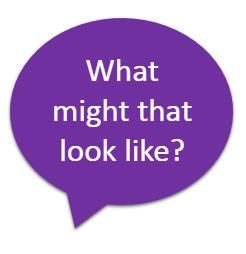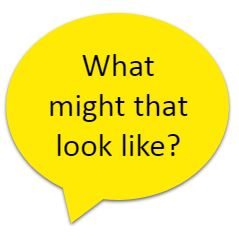| EARLY LEVEL | TECHNOLOGIES | |
| Experiences and Outcomes | Benchmarks | |
| Organiser – Computing Science | • Identifies and sequences the main steps in an everyday task to create instructions/an algorithm for example, washing hands.
• Classifies objects and groups them into simple categories for example, groups of toy bricks according to colour. • Identifies patterns, similarities and differences in objects or information such as colour, size and temperature and simple relationships between them |
|
|---|---|---|
| Understanding the world through computational thinking | ||
| I can explore computational thinking processes involved in a variety of everyday tasks and can identify patterns in objects or information.
TCH 0-13a Link to: Numeracy & Maths – Number, Money & Measure – Patterns & relationships MTH 0-13a, Shape, Position & Movement MTH 0-16a, Information Handling – Data & Analysis MTH 0-20b & c
|
||
 |
Progression |
|
| Through a variety of activities & play across my learning I can/am able to | Through a variety of activities & play across my learning I can/am able to | Through a variety of activities & play across my learning I can/am able to |
| Observe & explore the order of everyday processes in the world around me e.g. getting up & getting ready to come to nursery. | Say what happens first, next & last when observing the order & sequence of everyday processes e.g. our daily routine in nursery. | Describe/show different everyday processes & sequence the beginning, middle & end to create simple instructions/an algorithm e.g. for washing hands, cleaning teeth, etc. |
 From Education Scotland National Improvement Hub “What digital learning might look like”: From Education Scotland National Improvement Hub “What digital learning might look like”:
“When learning about steps required to solve problems (algorithms) learners might: * Discuss and then explain the steps involved in a simple everyday activity, such as; getting dressed, brushing teeth, bedtime routine or making a fruit kebab * Sing songs with repeating actions, such as ‘Head, Shoulders, Knees and Toes’ or ‘Wind the Bobbin Up’. Learners might then explain the steps involved in such activities and share these with other learners or adults; working through the sequence in order and correcting any mistakes the other person makes * Explore some of the Barefoot Unplugged resources, for example: Dance Move Algorithms or House Patterns” |
||
|---|---|---|
| With support, begin to observe & talk about similarities & differences between objects & things e.g. same colour or size. | Begin to observe & talk about how objects & things can be classified/grouped in more than one way depending on their similarities and/or differences e.g. colour, shape, size, texture, etc. | Classify/group objects & things into simple categories with increasing independence & say why I have grouped them in this way e.g. resources, toys, natural materials, etc. |
| With support, begin to notice patterns, similarities & differences in things I see, hear, feel & do e.g. words & actions in songs & rhymes, eye colour/hair colour, etc. | Begin to notice patterns, similarities & differences in things I see, hear, feel & do e.g. noticing repetition, order, uniformity & changes such as those found in a simple dance routine. | Notice & talk about or demonstrate understanding of patterns & relationships between things I see, hear, feel & do e.g. the temperature at different times of the year, life cycles of different creatures |
 From Education Scotland National Improvement Hub “What digital learning might look like”: From Education Scotland National Improvement Hub “What digital learning might look like”:
“When learning about sorting and identifying patterns learners might: * sort concrete objects in the world around them, such as: Numicon, Cuisenaire Rods, flower petals, magnetic shapes or buttons. Learners might then sort them by shape, size or colour and this will lead to discussions about any patterns that they can identify, such as “two buttons and a flower, two buttons and a flower.” * explore rhythm and timing to makeup their own sound or dance patterns using an app like Google Chrome Music Labs. Music is a relevant and engaging way for learners to explore repeating patterns * consider ‘When is the fridge most full – at the start of the week or the end and why is this?’ or ‘Are there more minibeasts in the garden when it is wet or dry – is it different minibeast depending on the weather?’ * notice the working patterns of adults, such ascertain members of staff on particular days or for certain activities” |
||
|
|
||
|
|
||
|
|
||
|
|
||
